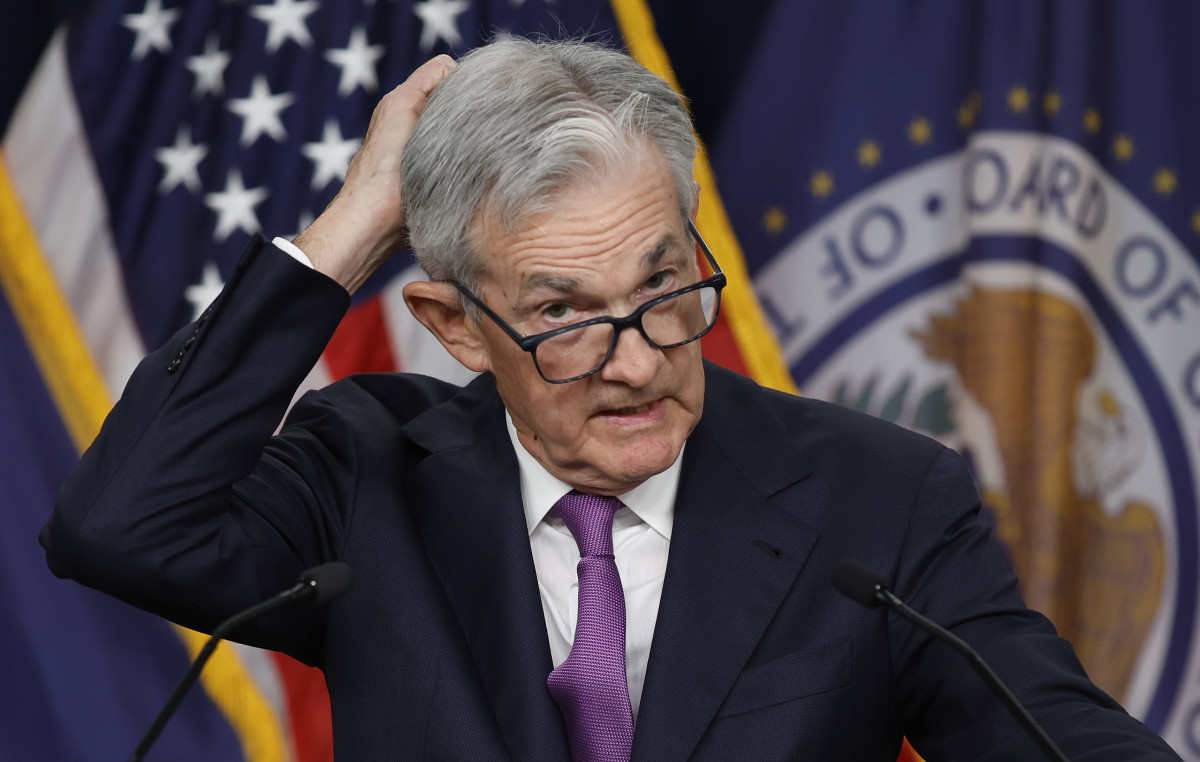
Updated 9:02 am, June 6, 2024
Before markets open on Thursday, a key central bank cut its base rate.
That may start the process of the Federal Reserve cutting its key rate this summer or early fall.
Maybe.
The European Central Bank, in a widely telegraphed move, trimmed its key rate from 4% to 3.75%, its first rate cut in nine years.
Related: Interest rate cut bets shift after surprising ADP jobs data
The move would follow the Bank of Canada's rate cut on Wednesday to 4.75% from 5%. Central banks in Sweden and Switzerland also have trimmed rates this year.
The central banks are worried that higher rates have stunted economic growth. In addition, inflation worries have been easing in the last year.
Lower interest rates outside the United States could push the dollar higher, stunting exports and boosting imports.
If U.S. rates are left alone, they could weaken the U.S. economy. A number of private-sector economists, including Mark Zandi, chief economist at Moody's Analytics, have said recently it's time to start bringing rates down.
Fed's tough inflation stance
Central bank rate cuts around the globe will put pressure on the Fed, which will hold a two-day rate-setting meeting starting June 11 to discuss its next move on interest rates.
The central bank probably won't make a rate-cut move at that meeting. But what the other banks are doing now may force a Fed move later, perhaps even at its September meeting.
The Fed, led by Chairman Jerome Powell, has been stubborn about wanting to see sustained lower inflation before starting to trim its key federal funds rate, which has been at 5.25% to 5.5% since July 2023.
The Fed's stated goal is to get inflation to 2% after the United States saw inflation reach as high as 9% in 2022 as the Covid-19 pandemic began to wane.
The fed funds rate is what the central bank wants banks to charge each other for overnight loans made to let member banks meet reserve requirements.
The fed funds rate provides the foundation for all U.S. interest rates.
Many Fed officials have said they see no need to trim the Fed funds rate because inflation is still higher than the Fed's goal of 2% a year.
Neel Kashkari, president of the Minneapolis Federal Reserve Bank, has said a rate hike is even possible if inflation remains stuck above 2%.
A key inflation report last week — the Personal Consumption Expenditures Price Index — put the inflation rate at 2.7%. It is the inflation measure the Fed monitors most closely.

Despite the Fed, bond rates are sliding
Money markets, however, are saying something else.
The 10-year Treasury yield, which directly affects mortgage rates and corporate bond yields, hit 4.71% on April 25. The yield fell to about 4.28% on Wednesday, a 9% decline from that April level.
The yield decline has brought the quoted rate on 30-year mortgages to about 7% from 7.5% on April 25, according to Mortgage News Daily. That would trim the monthly principal-and-interest portion of a mortgage payment to $1,663 from $1,748, a drop of about 5%.
Freddie Mac, one of the biggest lenders' mortgage capital sources, will release the results of its weekly mortgage-rate survey on Thursday. A week ago, the survey put the 30-rate at 7%. The survey reflects data from May 23 to May 30. Bond yields jumped sharply about midweek.
More Economic Analysis:
- Markets Walk on Eggshells, Jolting JOLTS, Sour Breadth, Intel, Nvidia and Musk
- Stock Market Today: Stocks higher on Fed rate cut bets as jobs data softens
- Fed rate cuts face big reset on renewed inflation risks
Stocks jump on Nvidia gains
Stocks were higher on Wednesday. The rate speculation began to seep into traders' minds. But the big reason for the gains was strength in semiconductor stocks, especially Nvidia (NVDA) , up 4.7% to a record $1,219.
Nvidia's market cap topped $3 trillion for the first time, joining Microsoft (MSFT) and Apple (AAPL) in the $3 trillion market-cap club.
Nvidia shares will split 10-for-1 after Friday's close.
The S&P 500 Index and the Nasdaq Composite Index both closed at record highs: 5,354 for the S&P 500 and 17,188 for the Nasdaq.
The Nasdaq-100 Index, concentrated in tech stocks, closed at 19,035 — its first close above 19,000. The index is up 13% this year after a 54% gain in 2023.
The VanEck Vectors Semiconductor ETF (SMH) closed 4.9% to a record $254.41. The Philadelphia Semiconductor Index was up 4.5%.
Related: Veteran fund manager picks favorite stocks for 2024







